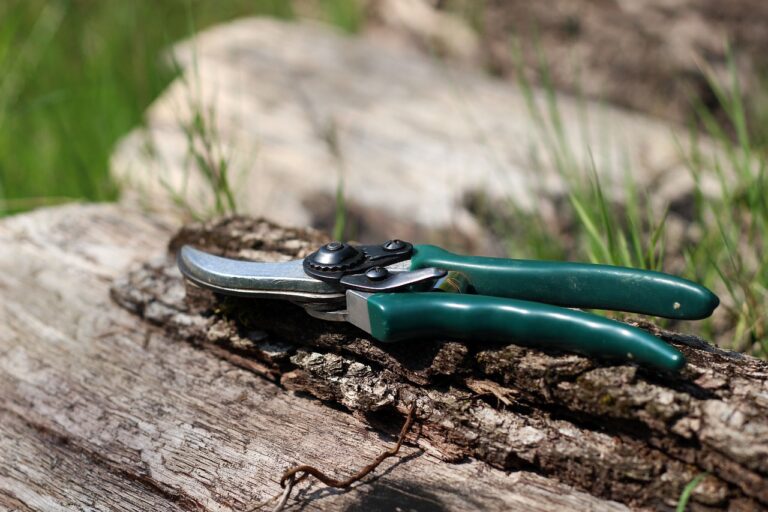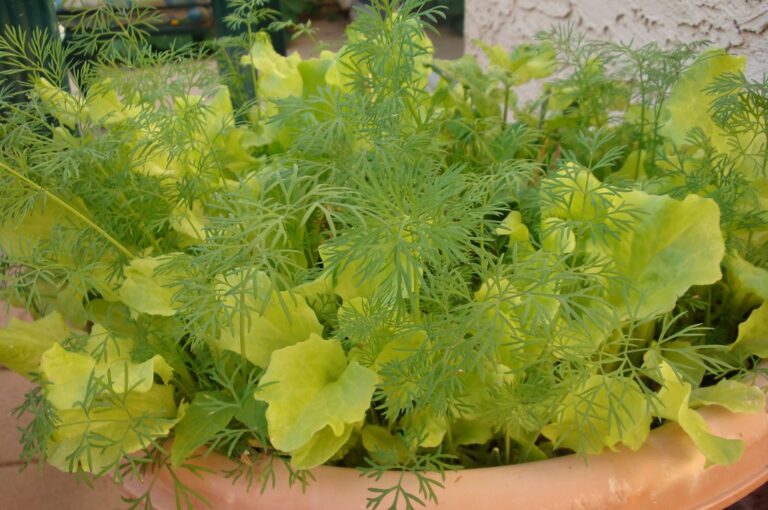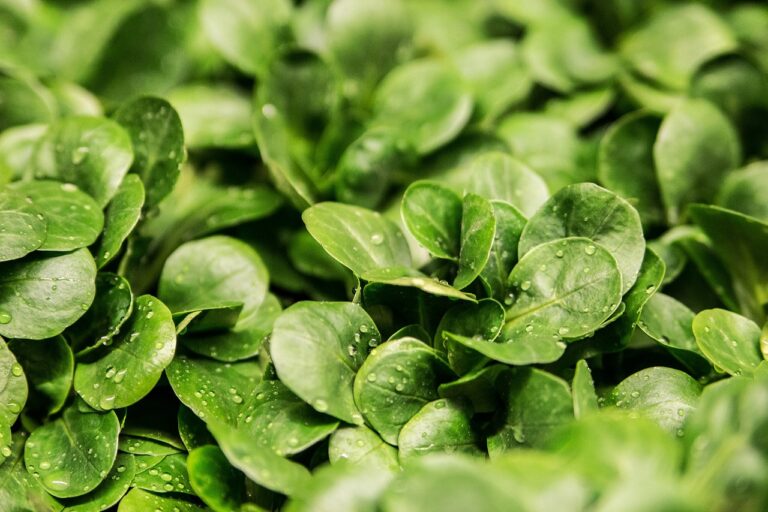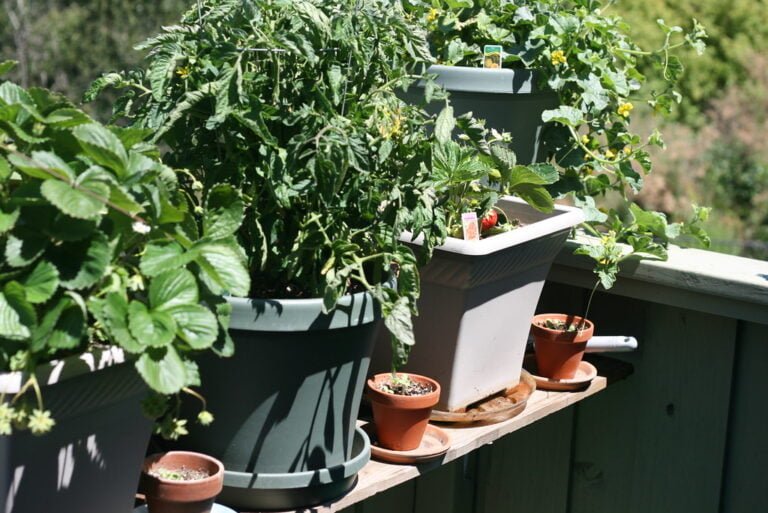Guide to Growing Eggplant in a Container
Looking to grow fresh eggplants but don't have a big garden? No worries! This guide will show you how to successfully grow eggplant in a container. With the right container, variety selection, and soil preparation, you'll be on your way to a bountiful harvest. Learn how to plant, care for, and harvest your homegrown eggplants, all while enjoying the convenience of container gardening. Get ready to savor the taste of your very own eggplants!
Selecting the Right Container
To start growing eggplant in a container, you'll need to choose the right container for your plants. The container should be at least 12 to 18 inches deep and wide, with enough space for the eggplant's roots to grow. Opt for a container made of durable material like plastic or terracotta, as these materials are lightweight and provide good drainage. Make sure the container has drainage holes at the bottom to prevent waterlogging. Additionally, consider the size of the eggplant variety you plan to grow and choose a container accordingly. Smaller varieties will do well in a 5-gallon container, while larger ones may require a 10-gallon container or larger. Remember to place the container in a sunny spot, as eggplants need at least six hours of direct sunlight per day.
Choosing the Best Eggplant Variety
Choose the best eggplant variety for your container garden by considering factors such as size, taste, and preferred cooking methods. When selecting an eggplant variety, it's important to choose one that will thrive in a container and produce abundant fruit. Compact varieties like 'Fairy Tale' or 'Ichiban' are well-suited for containers, as they have a smaller growth habit and produce smaller fruits. If you prefer a larger eggplant, consider 'Black Beauty' or 'Classic' varieties. Taste is another important factor to consider. Some eggplant varieties have a mild flavor, while others have a more robust and slightly bitter taste. Lastly, think about the cooking methods you prefer. Some eggplants are better for grilling, while others are perfect for roasting or sautéing. By considering these factors, you can choose the best eggplant variety for your container garden that suits your taste and cooking preferences.
Preparing the Soil for Container Planting
Now that you've chosen the best eggplant variety for your container garden, let's move on to preparing the soil for planting. The soil you use is crucial for the success of your eggplants. Start by selecting a high-quality potting mix that is specifically formulated for container gardening. These mixes are lightweight, well-draining, and nutrient-rich, providing the ideal conditions for your plants to thrive. Fill your container with the potting mix, leaving about an inch of space from the top to allow for watering. Before planting, it's essential to moisten the soil thoroughly. This ensures that the roots of your eggplants will have access to water right from the start. Once the soil is moist, you can proceed with planting your eggplant seedlings or seeds, following the instructions on the seed packet or plant tags. Remember to water your container regularly and provide the necessary nutrients to promote healthy growth.
Planting Eggplant Seeds or Seedlings
How do you properly plant eggplant seeds or seedlings in a container? Planting eggplant in a container is a great way to enjoy this delicious vegetable even if you have limited space. To begin, choose a container that is at least 12 inches deep and has good drainage. Fill the container with a well-draining potting mix, leaving about an inch of space at the top. If you are planting seeds, sow them about half an inch deep and cover them with soil. Water the container thoroughly. If you are using seedlings, dig a hole in the soil that is slightly larger than the root ball of the seedling. Place the seedling in the hole and cover the roots with soil. Water the container again to settle the soil. Place the container in a sunny spot and water regularly to keep the soil moist. With proper care, your eggplant will grow and thrive in the container, giving you a bountiful harvest.
Providing Adequate Sunlight for Growth
To ensure optimal growth, you should provide your eggplant container with ample sunlight throughout the day. Eggplants are sun-loving plants that require at least 6-8 hours of direct sunlight daily. Choose a spot for your container where it can receive the maximum amount of sunlight. If you have limited access to sunlight, consider using reflective surfaces such as mirrors or white walls to redirect sunlight onto the container. Ensure that there are no shading structures nearby that may obstruct sunlight. Additionally, you can rotate the container periodically to ensure even exposure to sunlight on all sides. Remember that insufficient sunlight can result in weak and spindly plants, with fewer flowers and fruits. So, make sure your eggplant container gets the sunlight it needs for a bountiful harvest.
Watering and Fertilizing Eggplant in Containers
To ensure healthy growth and optimal production, you should properly water and fertilize your eggplant container. Watering is crucial for eggplant plants as they require consistent moisture. It is recommended to water the container deeply, ensuring that the soil is evenly moist but not waterlogged. Check the moisture level by sticking your finger about an inch into the soil; if it feels dry, it's time to water. Fertilizing is also important to provide essential nutrients. Start by applying a balanced, slow-release fertilizer when planting the eggplant. As the plant grows, continue fertilizing every four to six weeks with a nitrogen-rich fertilizer. Follow the package instructions for proper dosage. Remember to water the container before and after fertilizing to prevent any potential burning of the roots.
Pruning and Supporting Eggplant Plants
To maintain healthy and productive eggplant plants in your container, you will need to prune and support them. Pruning is essential to encourage air circulation, prevent diseases, and promote fruit production. Start by removing any dead or damaged leaves and branches. Trim the main stem to encourage branching and bushiness. Pinch off the tips of the branches to promote lateral growth and more fruiting sites. Supporting your eggplant plants is crucial as they can become top-heavy and susceptible to breakage. Use stakes or trellises to provide support for the plants. Tie the main stem and branches loosely to prevent damage. Regularly check and adjust the supports as the plants grow. Pruning and supporting your eggplant plants will ensure they stay healthy, productive, and upright in your container garden.
Managing Pests and Diseases in Container Gardening
To effectively manage pests and diseases in your container garden, you will need to be proactive and vigilant. Start by regularly inspecting your plants for any signs of pests or diseases. Look for chewed leaves, discolored spots, or wilting plants. If you notice any issues, act quickly to prevent them from spreading. One effective method is to remove any affected leaves or plants immediately. You can also use organic insecticides or fungicides to control pests and diseases. Neem oil, for example, is a natural option that can help deter pests. Additionally, practicing good hygiene is crucial. Keep your containers clean and free from debris, as this can attract pests and provide a breeding ground for diseases. Remember to water your plants properly, as overwatering can lead to root rot and other fungal diseases. By following these steps, you can protect your eggplant plants and ensure a healthy harvest.
Harvesting and Using Homegrown Eggplants
Once you have effectively managed pests and diseases in your container garden, it's time to move on to the exciting process of harvesting and using your homegrown eggplants. Harvesting eggplants is a rewarding experience, as you get to enjoy the fruits of your labor. The best time to harvest eggplants is when they are fully mature but still shiny and firm. To harvest, simply cut the eggplant stem about an inch above the fruit. It's important to handle them carefully to avoid bruising. Once harvested, you can use your homegrown eggplants in a variety of delicious dishes. From classic eggplant parmesan to grilled eggplant sandwiches, the possibilities are endless. Remember to wash and slice the eggplants before cooking, and enjoy the fresh, homegrown flavor they bring to your meals.
Tips for Overwintering Eggplants in Containers
To successfully overwinter your eggplants in containers, you will need to take certain precautions. First, choose a suitable container that is large enough to accommodate the root system of your eggplant. It should have drainage holes to prevent waterlogging. Before winter arrives, trim your eggplant plants back to about six inches in height. This will reduce the stress on the plant and help it conserve energy during the colder months. Place your containers in a location that receives ample sunlight, preferably a south-facing spot. Protect your eggplants from frost by wrapping the containers with bubble wrap or horticultural fleece. You can also move the containers to a sheltered area like a greenhouse or garage. Water sparingly during winter, as the plants will require less moisture. By following these tips, you can successfully overwinter your eggplants and enjoy a bountiful harvest next season.
Conclusion
So there you have it, a comprehensive guide to growing eggplant in a container. By following these steps and tips, you can successfully cultivate your own delicious eggplants right at home. Remember to select the right container, choose the best eggplant variety, prepare the soil properly, provide adequate sunlight, prune and support the plants, manage pests and diseases, and finally, enjoy the harvest of your homegrown eggplants. Happy gardening!






